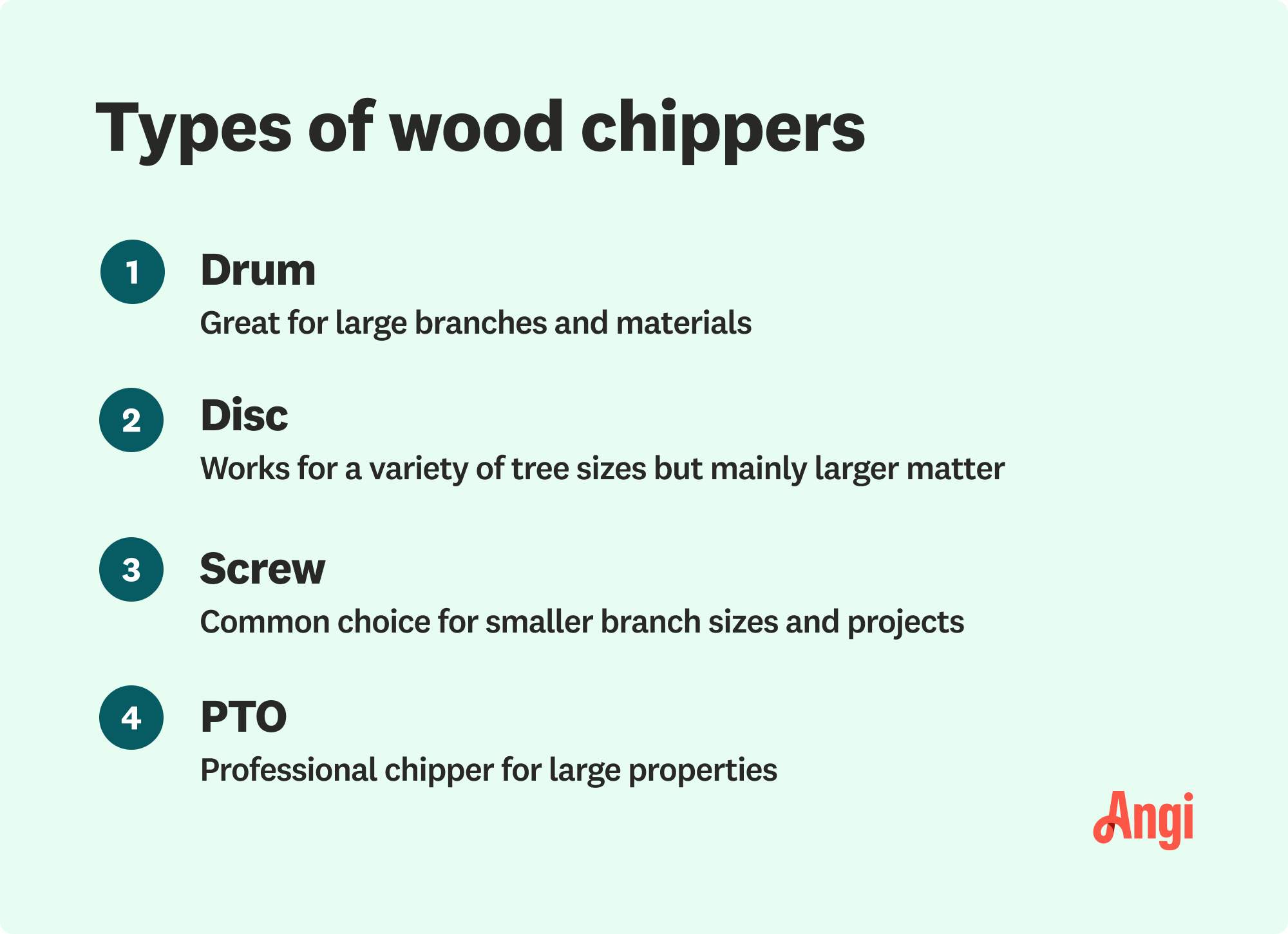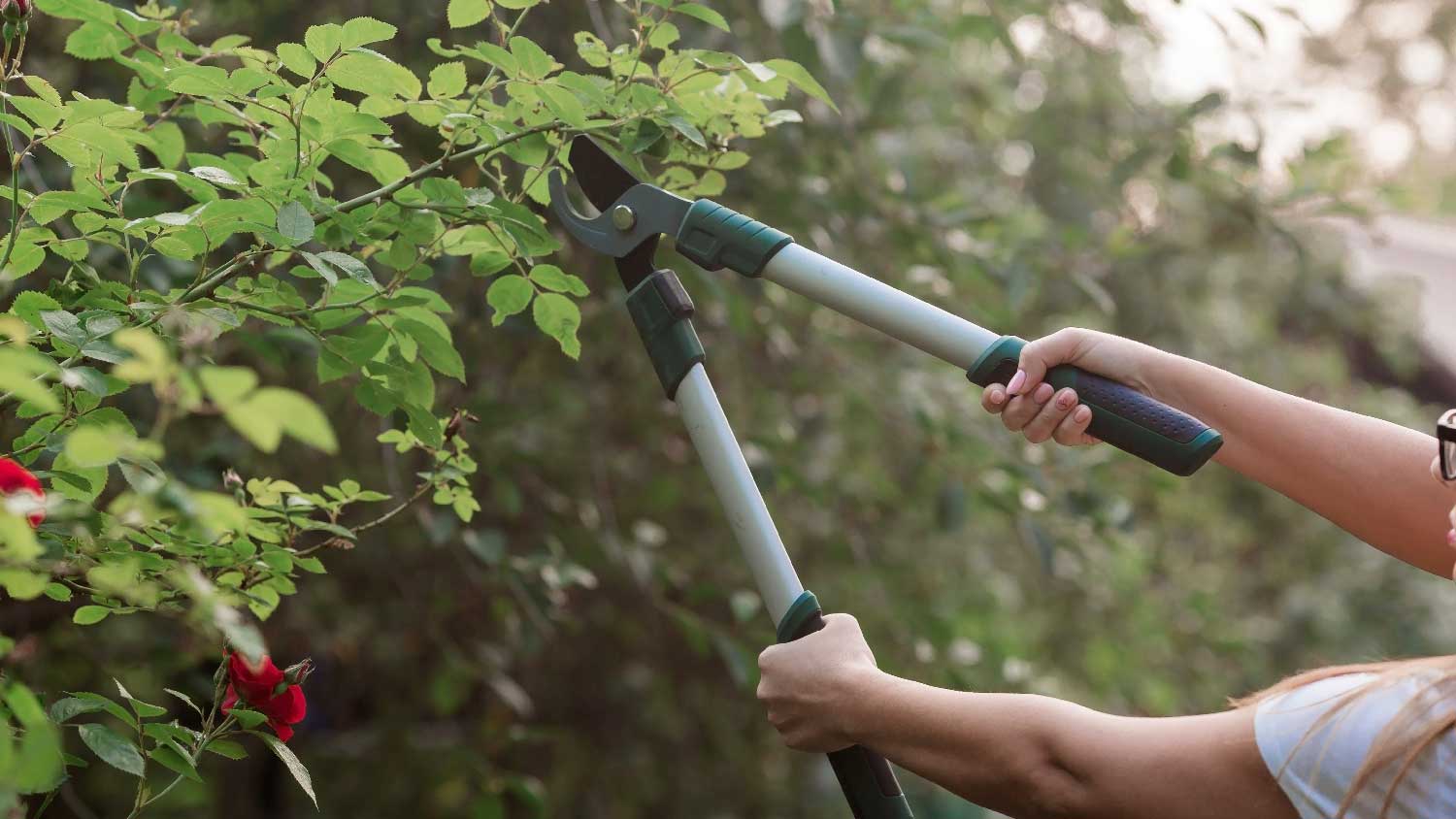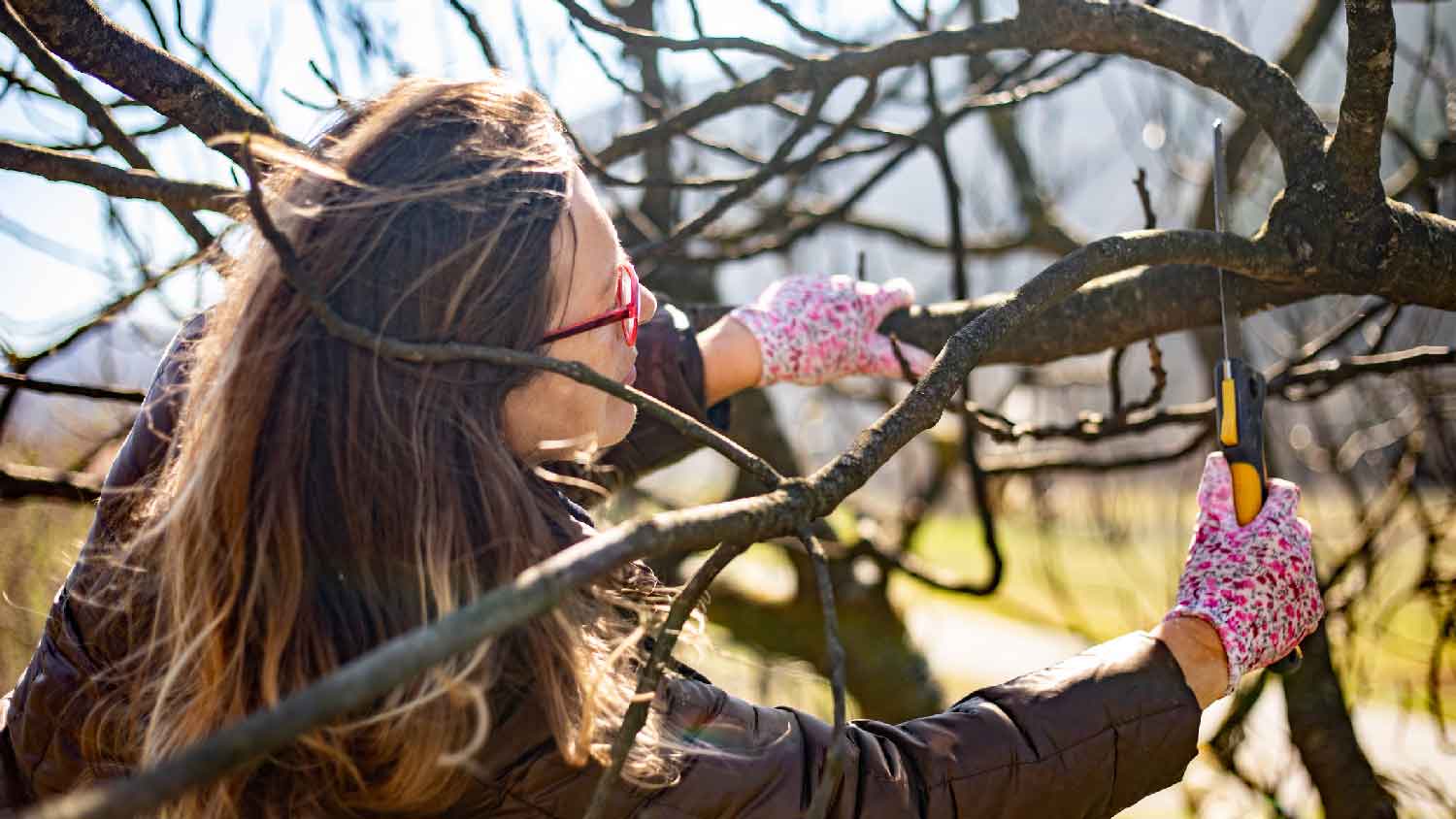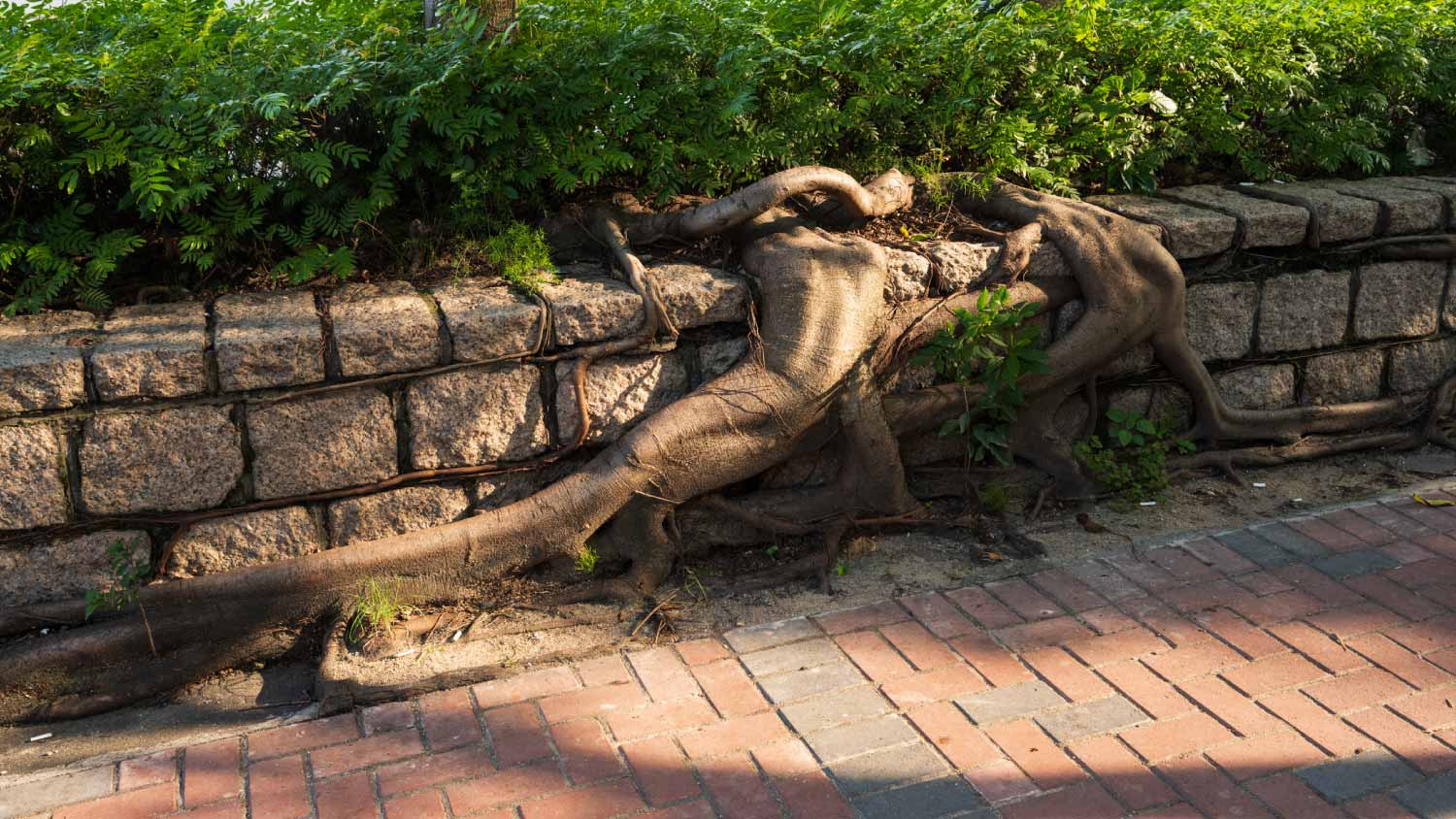9 Tree Cutting Tools and Equipment You Need
These tools will have you yelling “Timber!” in no time


Trees are a wonderful feature on any homeowner's property—most of the time. While trees are desirable, they can cost thousands of dollars to replace, so it’s helpful to own tree cutting tools. Sometimes, you want to remove a dead tree, or perhaps the tree is just an impediment or an eyesore. Whatever the case, you may consider chopping a problematic tree down.
However, tree removal is not as simple as grabbing an ax and wailing away on the trunk until it comes crashing down. In reality, it's a painstaking process that involves investigation and the right tools and techniques. Here's what you need to know about the tree cutting tools and equipment you'll need.
When trimming trees, it's essential to prioritize safety by maintaining a safe distance from power lines, avoiding the potential fall path, and wearing protective gear. We strongly recommend hiring a professional tree service to trim large trees, given the significant safety risks.
1. Chain Saw

A chainsaw is your heavy-duty cutting tool. You'll need it for larger trees that resist options like an ax. However, you need to use it carefully. In addition to being a significant safety risk to those who are inexperienced with it, it also won't cut as effectively if you don't use it properly. Place the running chainsaw against the wood with a light touch, and then slowly apply pressure all the way through the cut.
Types of Chainsaws
You’ll have a variety of chainsaw types to choose from, including gas, electric, and battery-powered saws. Which one you should choose will depend on the type of tree you’re cutting down and your budget.
Gas chain saws: These chainsaws can cut through the toughest trees and run for longer periods of time than electric or battery-powered chain saws. However, they’re more costly, heavier, and run on gas, which makes them less environmentally friendly.
Electric chain saws: This type of chainsaw burns cleaner energy, produces less noise, and is lighter than a gas chain saw. However, electric chain saws aren’t as powerful, may not reach the site location without an extension cord or two, and are less effective.
Battery-powered chain saws: These chainsaws are easy to transport, lower in price, and cordless, making them a good option for small jobs. At the same time, the battery doesn’t last as long, giving them a shorter life than gas chainsaws. The motor is also weaker and, therefore, less capable of cutting through branches.
Most chainsaws typically range from 10- to 20-inch bars, though some come in sizes as little as 6 inches and as large as 24 inches. The one you choose could mean the difference between a successful job and a frustrating return to the hardware store. A bar that’s too small won’t tackle larger limbs and trunks, while a bar that’s too big could be heavy and difficult to maneuver.
With this in mind, here’s a breakdown of the different chainsaw sizes for removing trees.
| Chainsaw Size (Inches) | Best Uses |
|---|---|
| 10–14 | Trimming, pruning, and limbs |
| 14–16 | Small trees, thick branches |
| 16–20 | Medium-sized trees |
| 20–24 | Heavy-duty trees, for pros only |
It’s also worth mentioning that chainsaws come in different engine sizes, too. A smaller engine on a larger bar could be too weak even if you have the right-sized bar. If you’re having issues, you might want to check the engine size, which can run anywhere from 32 to 62 cubic centimeters (cc).
2. Handsaw

There are many different kinds of handsaws and hacksaws, from small ones that are only good for saplings and branches to large two-person handsaws meant for larger trees. Generally, you should use handsaws for smaller trees and saplings.
3. Pole Saw

Pole saws are like miniature chainsaws at the end of a long stick—they can reach up to 10 to 15 feet, helping you target branches that would otherwise need to be accessed with a ladder. They're most commonly used for cutting off thick branches high up in the tree that are hard to reach. However, you can use this tool to cut down small trees, too.
Types of Pole Saws
There are both manual, and power pole saws, and some are better suited for shrubs than trees, so let’s go over the different types of pole saws to help you choose the right one for your project.
| Type of Pole Saw | Description |
|---|---|
| Electric pole saw | One of the easiest and most cost-friendly options on the market. It’s lightweight and can cut branches up to 15 feet tall and eight inches in diameter. |
| Gas pole saw | Use on heavy-duty branches or ones beyond the reach of an electric polesaw’s power cord. This option can reach up to 12 feet tall and cut through larger branches. |
| Manual pole saw | Doesn’t rely on electricity or fuel to get the job done. This option is ideal for smaller branches. |
4. Ax

This is the traditional way to cut down a tree, but it's definitely a workout as well. Axes work with all tree sizes, although it could take you all day to take down an enormous tree with it (and it’s not recommended). You'll want to chop at a 45-degree angle—first from the top and then from the bottom—until you get a third of the way through the tree and create a notch. Then, go to the other side of the trunk and finish the job. (The entire process of chopping a tree is a lot more involved, though, so do your research before attempting it).
5. Wedge

The purpose of a wedge is to control the direction that a tree falls. It also prevents the bar and chain on your chainsaw from getting pinched. You may need multiple wedges for larger trees to give you enough leverage to tip the tree in the direction you want.
6. Hatchet

Hatchets are similar to axes, but they're smaller. They're generally only suitable for the smallest of trees. You would have trouble felling even a medium-sized one with a hatchet, and you'd risk breaking the hatchet. Another difference is that you only use one hand to swing a hatchet, which changes the dynamics when chopping.
7. Wood Chipper

Once you've knocked down a tree, you'll have to get rid of it. This could include chopping it into lumber, or you can eliminate it by feeding it through a wood chipper to get rid of it completely.
Types of Wood Chippers

Most wood chippers for residential use are electric or gas. From those two types of wood chippers, you may also need to choose between a drum, disc, screw, and mechanical power take-off (PTO) chipper.
Electric Wood Chippers
Electric wood chippers need to be connected to a power source, which can greatly limit where you can use the machine. However, they’re lightweight and more affordable than gas wood chippers. At the same time, electric wood chippers are less effective at breaking down larger pieces of wood.
Gas Wood Chippers
Gas wood chippers, on the other hand, require more maintenance. Like a lawnmower, you'll need to regularly add gas and oil to the machine. You can position your gas wood chipper in your desired location. Gas wood chippers are also more capable of handling larger organic matter. However, this option costs more than electric wood chippers and is heavier to transport.
8. Loppers

Tree loppers are some of the best tools to trim trees, with avid gardeners using such tools to lop away at small branches. Tree loppers are larger than standard pruning shears, giving them an edge in removing denser plants and trees. For some tree-lopping projects, you may want to step up your game and invest in a tree-lopper with an extendable handle to reach tricky spots.
9. Pruning Saws

Before you invest in a chain saw, pruning saws may just save the day. Pruning saws come in an assortment of styles and sizes. The most effective pruning saw is an electric pruning saw, which operates similarly to a miniature chainsaw without the added weight and bulkiness.
If you can’t cut through the branch, you might need to upgrade to a chainsaw to get the job done.
Climbing and Rigging Equipment

In addition to the cutting equipment listed above, you’ll also need climbing and rigging equipment if it’s a larger tree. Some equipment used for this includes:
Ladder: A multi-position tripod ladder is best for trimming or removing trees, as it stays stable but also adjusts. Avoid using an extension ladder, which isn’t as stable.
Helmet: You'll need one to protect yourself from falling trees as well as from falling from tall trees.
Protective glasses: Glasses will keep debris out of your eyes when you're cutting.
Work gloves: Gloves will help prevent splinters and other injuries from cutting.
Straps: Straps are necessary to keep you from falling out of your rigging.
Pulleys: Pulleys give you the leverage to navigate up and down the tree.
Rope: It helps you move up and down the tree and keeps you secure.
Ascenders and descenders: These pieces of rigging equipment make it easier and more efficient to move up and down a tree.
Rigging plates: These plates keep your rigging system firmly in place.
Winches: These help you pull yourself up to reach higher points in the tree.
Cable hoists: This is a steel cable that's vital to the strength of your rigging system.
However, we must note again that attempting to chop down any trees that require you to use climbing equipment is extremely difficult and dangerous. Only go through with this process if you seriously know what you’re doing.
How to Trim Tree
Pruning a tree can be a fun, albeit dangerous DIY project. If you’re up for the challenge and enjoy the satisfaction of trimming branches, it’s important to plan for success. Choose the best season for pruning your particular tree species, inspect your tree’s condition, wear all the proper safety gear (like gloves), and don’t over-prune your tree.
For smaller branches, you should be able to simply trim the branches with cutting shears, but for larger branches, you’ll need to cut halfway under the branch before severing it from the top, just past the bottom cut.
How to Remove a Tree
Cutting down a tree is a more complex process than merely snipping away at unruly branches. On top of the steps you took to trim your tree, you’ll need to have experience handling a power tool like a chainsaw. Again, safety is of the utmost importance, so be sure to contact a tree removal company if you have any qualms about using a chainsaw.
You’ll need to calculate and prepare the felling zone, create an escape route, remove all the limbs, and then make the felling cut before you can clean up the trunk and debris.
Hiring a Tree Removal Specialist

While you may be able to do the job yourself with the right tools and a small tree, it’s a good idea to hire a pro for this service. Cutting down a tree could be dangerous to yourself and others, and it could cause serious property damage if you cut it incorrectly and it falls in the wrong direction. This is a high-stakes project, so make sure it’s done right.
Considering the cost of tree removal is between $200 and $2,000, it's just not worth the risk to save a little bit of money. Contact a tree cutting service near you for a quote—it may cost less than you think.
Frequently Asked Questions
The best tool to cut trees is a chain saw. You can adjust your chain saw to the correct size based on the size of the branches, offering you the fastest and cleanest cut for medium- to large-sized trees. Depending on the type of chainsaw you use, you can cut through larger trees than you would with a more manual tool like an ax.
For trimming trees, your best tool is a pair of pruning shears or loppers. Both options work best for branches that are under 3 inches in diameter. Trimming trees with a larger diameter may require a robust tool like a small chainsaw or a handsaw, so take into account your tree’s diameter when deciding between tools.
Whether or not it’s easier to cut wood when it’s wet versus dry depends largely on the type of tool you use and the wood you’re cutting. For example, a chain saw should still be able to cut through wet wood with relative ease, but it may be more difficult to maneuver due to the wood fibers sticking to the chains of the saw.
However, you might want to avoid cutting wood entirely when it’s wet if you’re pruning your tree. Sawing a wet tree that you don’t plan on removing can also encourage bacterial and fungal growth and decay.















